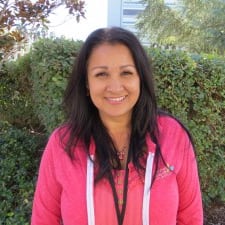 By Delilah Dees, BSN, RN, PHN, Remedies nurse blogger at Children’s Hospital Los Angeles
By Delilah Dees, BSN, RN, PHN, Remedies nurse blogger at Children’s Hospital Los Angeles
The American Burn Association states that more than 136,000 children are treated in emergency rooms each year due to burn-related injury. Continue reading as I explain the three types of burns, why babies are more at risk and how you prevent your child from burn-related injury.
Burns are classified into three categories depending on how bad the burn is.
First-Degree Burns
First-degree burns are the mildest of the three, and are limited to the top layer of skin. Signs and symptoms of first-degree burns include:
- Minor swelling,
- Pain,
- Redness, and
- Dry skin without blisters.
Healing time is about three to six days. The top skin layer over the burn might peel off in one or two days.
Second-Degree Burns
Second-degree burns are more serious, involve the skin layers beneath the top layer and are usually the most painful. Signs and symptoms for second-degree burns include:
- Blisters that might break open to reveal a wet-looking that is bright pink to “cherry red,”
- Severe pain, and
- Redness.
Healing time varies depending on the severity of the second-degree burn. It can take up to three weeks or more.
Third-Degree Burns
Third-degree burns are the most serious and involve all the layers of the skin and underlying tissue. Signs and symptoms of third-degree burns include:
- Dry-looking skin on the surface;
- “Waxy white,” leathery, brown or charred-looking skin;
- Little or no pain; and
- Potential numbness at first because of nerve damage.
Healing time depends on the severity of the burn. Deep burns (called full-thickness burns) will likely need to be treated with skin grafts, in which healthy skin is taken from another part of the body and surgically placed over the burn to help the area heal.
Protect Your Child from Burn Injury
To learn about effective ways to protect children from burn injury, I reached out to Calvin Lowe, MD, FAAP, medical director, Children’s Emergency Transport at Children’s Hospital Los Angeles. He offered these helpful tips:
- Keep matches, lighter fluid, candles and fireworks out of reach of your child.
- Place child-safety covers on all electrical outlets.
- Change the battery in your smoke alarm every six months.
- Use a cool mist vaporizer rather than a humidifier.
- Set the thermostat of your water heater at 120 degrees (the default setting usually 140 degrees, which can burn your child).
- Turn pot handles toward the back of the stove, so kids can’t reach them.
- Block your child’s access to the stove.
- Avoid using large tablecloths or large placemats to display hot drinks and food (children will tug and risk being spilled on).
- Don’t hold your child while cooking.
- Do not warm your child’s bottle in the microwave.
Other prevention tips include:
- Don’t leave your child unattended in the tub, even for a moment. They may turn the hot water nob.
- Keep your toddlers out of the kitchen while you prepare meals—this includes camp fires and barbeque.
- Don’t let electrical cords of appliances (e.g. coffee pots, crock pots, etc.) dangle over the edge of your kitchen counter.
- Apply a sunscreen lotion with a sun protection factor (SPF) of 30 or more at least 30 minutes before your child is in the sun.
- Don’t smoke while holding your child.
- Keep infants and toddlers away from fireplaces, barbecue grills, kerosene heaters and wood-burning stoves (use fireplace screens or doors).
- Don’t leave your child alone near hot appliances (e.g. oven, space heater, curling iron, fireplace or light).
- Unplug appliances when not in use.
Any burn your child receives should be considered serious and treated immediately. A burn injury can happen at any time, so share this information to make sure children and families remain safe.
Delilah debunks burn myths and explains why infants and young children are more at risk. Click here to read more.

























